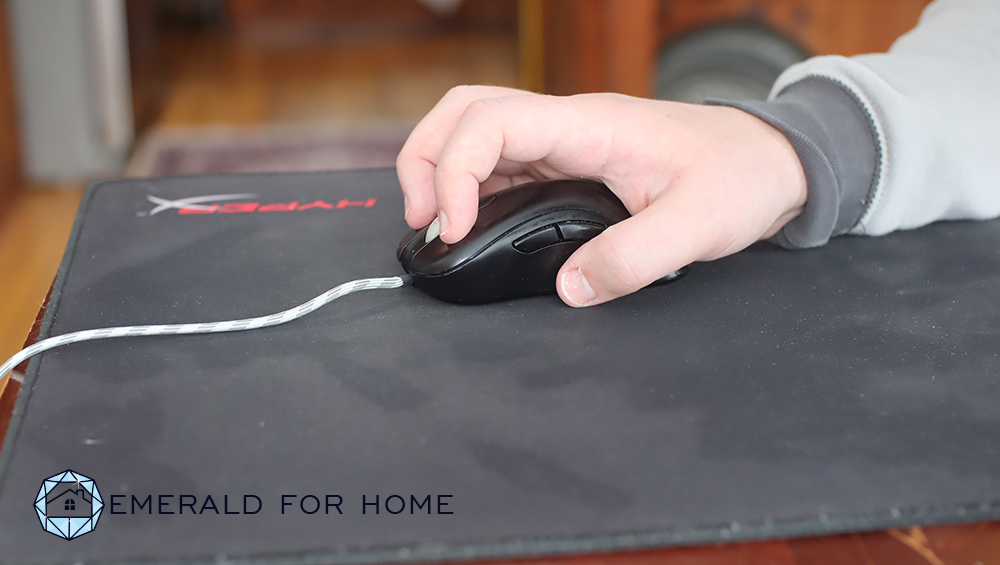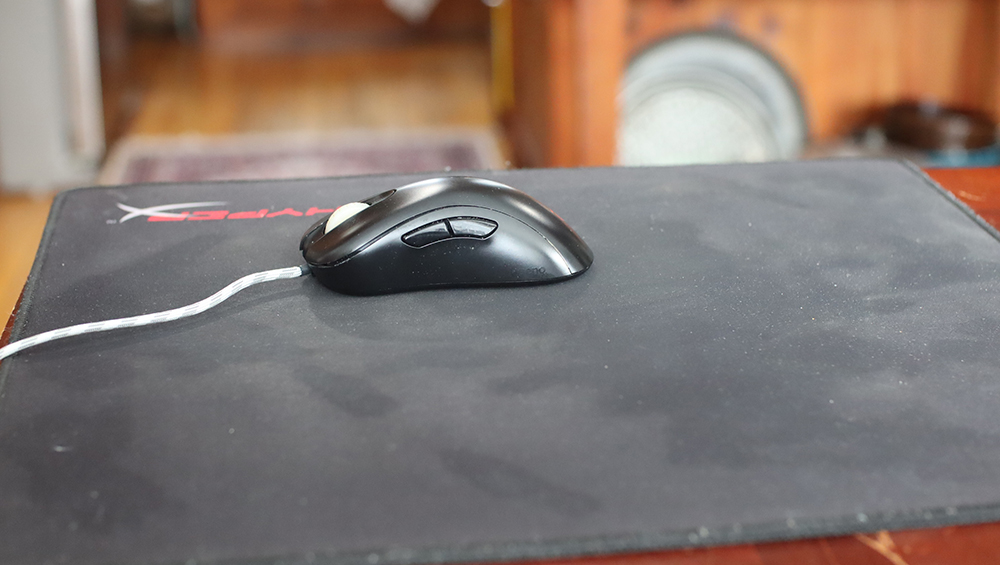The three main types of mouse grips include palm, claw, and tip grip. These various grips are intended to increase performance in specific game genres and have their respective strengths and weaknesses.
The palm grip cups the mouse with a relaxed, low tension grip. The claw grip has the two fingers arched which reduces contact with the palm. The tip grip removes the palm from the grip and relies on the fingertips to move the mouse.
Types of Mouse Grips
Palm Grip

The palm grip is the most popular. It is a relaxed grip where-in the hand is cupped and the fingers and palm contact the mouse.
The palm grip uses the mouse as an extension of the forearms which aids in stability and control over movement. However, repeated movements using a palm grip can also cause fatigue on the forearms and shoulders.
Due to how the fingers contact the mouse, it’s less useful for games that require spamming. It also performs poorly in games that require micro adjustments/flicks as vertical movements and waving motions are minimized.
A Palm grip is suited to mid and full-sized mice. Mice that are palm gripped are typically marked as wider or longer with a steep arch coming from the back of the mouse. This results in an ergonomically friendly structure that supports the hand.
Claw Grip

The claw grip eliminates contact of the proximal and middle phalanx (middle parts of the fingers) with the mouse. This is done by arching the main two fingers (mouse button 1 and mouse button 2). It also removes the palm such that only the distal phalanx (finger tips) and the back of the palm are in contact with the mouse.
The claw grip allow the fingers to be more responsive by applying more pressure and grip onto the mouse. This results in improved tracking in game and the ability to make micro adjustments (where the palm grip lacks). Due to increased pressure by the fingers, spamming is also much easier.
A claw grip is high tension and is more fatiguing than the palm grip. While fluidity of movement through the wrist is beneficial, it also has inadequate support from the forearms.
Most people who claw grip prefer to use an ambidextrous mouse with little to no edges. A rounded back is also common as it makes it easier for the user to grip.
Finger Tip Grip

The finger tip grip or simply “tip” grip completely eliminates the palm and solely relies on the fingers to control mouse movement. A tip grip is usually reserved for two scenarios: people with large hands (specifically fingers) as well as smaller mice.
Tip grip is very low tension and is the loosest of the three grips. This allows the user freedom of movement in all directions, however it’s much harder to track with as arm aiming is minimized.
Mice that are fingertip gripped are similar in nature to that of claw gripped mice. They are typically ambidextrous with a rounded back. To make movement easier, mice that are fingertip gripped are usually lightweight (less than 90g) to make horizontal, vertical, and lift-off less taxing.
A big problem with fingertip gripping is the inability to use the scroll wheel. This can be problematic for people who use the mouse-wheel to jump/scroll jump and/or change weapons.
Which Mouse Grip is Best?
There isn’t one.
At the end of the day, you’re going to perform best with a mouse grip that is most comfortable for you and how you prefer to play. I personally use a claw grip for FPS and MOBAs (improved aim and spam-ability of buttons). However, for relaxed games like RPGs I use a palm grip.
If I were to make a recommendation, I’d tell you to switch to a claw grip. However, a good way to tell what your hand has a preference for is to buy two mice of similar size, but to buy one that caters to one type of grip.
To illustrate, I use my Zowie EC2 for Palm grip and the Zowie S2 for Claw grip. The EC2 is more ergonomic and fits the palm very well, the S2 is an ambidextrous mouse that can accommodate a claw grip.

